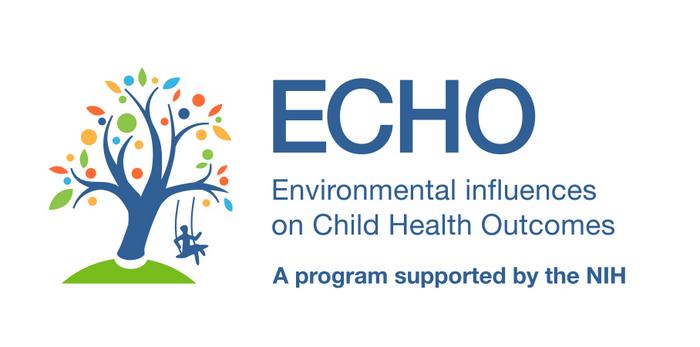A groundbreaking longitudinal study conducted as part of the Environmental influences on Child Health Outcomes (ECHO) Program has unveiled critical insights into early childhood body mass index (BMI) trajectories and their profound implication in the risk of future obesity. Supported by the National Institutes of Health (NIH), this extensive research effort meticulously tracked the BMI of a nationally representative cohort of children from infancy up to nine years of age. The revelations underscore the heterogeneity in early growth patterns and emphasize the potential of early intervention strategies to mitigate the growing epidemic of childhood obesity.
At the heart of this investigation lies the recognition that not all children follow a uniform developmental course in terms of body weight. The study illuminated two distinct BMI progressions within the cohort. The predominant group, comprising approximately 89.4% of participants, exhibited a conventional BMI curve wherein the index declined during the initial years of life—specifically between ages one and six—before incrementally rising as children approached middle childhood. Intriguingly, a minority subset, accounting for 10.6% of the cohort, demonstrated an atypical pattern characterized by a plateau in BMI from ages one to 3.5, succeeded by an accelerated escalation from 3.5 years onward through age nine. This trajectory was strongly associated with a statistically significant elevation in the likelihood of manifesting obesity by the terminal point of observation.
The implications of these findings extend beyond mere description of growth trends. Children displaying the atypical BMI growth pattern registered mean BMI values exceeding the 99th percentile by age nine, a marker conventionally linked with considerable health risks. This hyper-accelerated weight gain phase corresponds with a critical developmental window when interventions could be most impactful. The physiological mechanisms underlying such trajectory divergence may include complex interactions between metabolic programming, environmental exposures, and genetic predisposition, warranting further mechanistic study.
A salient contribution of the study lies in its elucidation of early-life determinants that predispose children to deleterious BMI trajectories. Among identified risk factors are high birthweight, maternal tobacco use during gestation, elevated pre-pregnancy maternal BMI, and excessive gestational weight gain. Each of these variables independently and synergistically contributes to perturbations in the metabolic milieu of the developing child. High birthweight, often reflective of intrauterine overnutrition, can predispose to adipogenic pathways, while prenatal exposure to cigarette smoke is known to disrupt fetal organogenesis and metabolic regulation, potentially priming offspring for dysregulated energy balance.
Analytically, the study leveraged a robust observational design involving 9,483 children recruited across multiple U.S. regions participating in the ECHO Cohort. Comprehensive BMI data were collated through a triangulation of medical records, caregiver-reported measures, and direct anthropometric assessment, bolstering the reliability and validity of growth trajectory ascertainment. The longitudinal framework enabled researchers to apply sophisticated growth curve modeling techniques, thereby delineating subpopulation patterns with greater granularity than cross-sectional snapshots typically permit.
Obesity in childhood, typified by a BMI at or above the 95th percentile for age and sex, reflects excessive adiposity and confers increased vulnerability to a spectrum of chronic diseases. Without timely intervention, elevated BMI persisting into adolescence and adulthood markedly escalates the risk of type 2 diabetes mellitus, cardiovascular pathologies, and other metabolic syndromes. Thus, early detection of aberrant BMI trajectories is paramount in the context of public health to preempt the cascade of adverse outcomes.
The study’s findings resonate profoundly with current paradigms emphasizing the developmental origins of health and disease (DOHaD), which posit that early-life environmental exposures exert enduring effects on physiological regulation. The unique contribution here is the identification of specific time points—particularly before age 3.5 years—where BMI trajectories diverge, furnishing a critical window for preventive strategies. Children exhibiting stagnation in BMI reduction or rapid increases post-3.5 years represent optimal targets for monitoring and intervention.
Chang Liu, PhD, an investigator affiliated with Washington State University and a key contributor to this study, emphasizes the importance of unprecedented early identification. “The ability to characterize atypical BMI patterns by age 3.5 years underscores the necessity for vigilant surveillance during early childhood to curb obesity risk,” states Liu. This perspective aligns with emerging clinical guidelines advocating for routine growth monitoring and tailored counseling within pediatric care systems.
Furthermore, the research highlights modifiable maternal factors that can be addressed prenatally to optimize offspring health trajectories. Maternal smoking cessation programs, nutritional counseling to manage gestational weight gain, and preconception weight optimization emerge as critical avenues to influence intergenerational obesity risk. The integration of such maternal health interventions with pediatric surveillance holds promise for a comprehensive approach to combat childhood obesity.
In summation, this seminal ECHO study advances our understanding of the developmental nuances governing BMI progression in children and articulates actionable insights into mitigating obesity risk. The dual identification of distinct BMI growth trajectories, coupled with elucidation of perinatal risk factors, charts a course for targeted public health measures and informs clinical practice. As childhood obesity continues to pose global challenges, such data-driven strategies are essential to foster healthier generations.
This collaborative research project, encompassing diverse U.S. populations and utilizing rigorous longitudinal methodologies, represents a paradigm shift in pediatric obesity prevention research. Its publication in JAMA Network Open reflects its significance and broad relevance to the scientific and medical communities engaged in metabolic health. Future investigations leveraging these findings may explore mechanistic underpinnings and intervention efficacy, further cementing the critical role of early-life factors in lifelong health trajectories.
Subject of Research: People
Article Title: Early-Life Factors and Body Mass Index Trajectories Among U.S. Children in the ECHO Cohort
News Publication Date: 22-May-2025
References: Liu, Chang, M., et al. (2025) Early-Life Factors and Body Mass Index Trajectories Among U.S. Children in the ECHO Cohort. JAMA Network Open. DOI: [Not Provided]
Image Credits: The ECHO Program
Keywords: Obesity, Body weight, Childhood obesity




